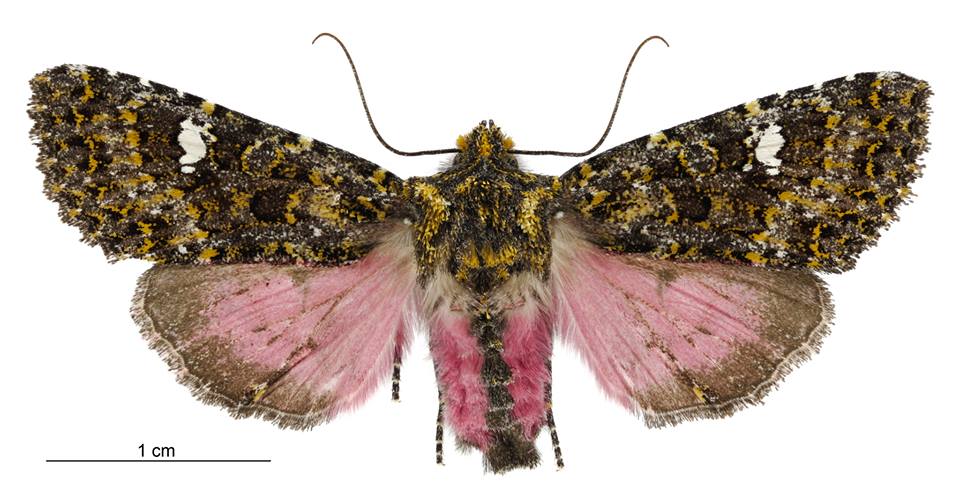Moth of the day: Meterana meyricci aka the "Pink Moth"
This moth is as fantastic as the images below suggest. Meterana meyricci is the instant rebuttal to the common misconception that moths are boring and drab colours. It is a firm favourite at face painting sessions.
You can see from the images below that the brightly coloured pink is on the hind wings and abdomen but not the forewings, thorax or head. This is quite a common strategy in the insect world as it means the moth can close its forewings over the brightly coloured pink parts and hide. Bright colours that can be hidden like this are usually used for signalling - it's the moth equivalent of a tudor court lady flashing an ankle.
We chose Meterana meyricci as the moth emblem for the Puka Whakamārama o te Pepe Nui - Te Hīheru. This guide covers the dry inland basins of the Central South Island the Crosby Moth regions of Central Otago (CO); Otago Lakes (OL) and the MacKenzie Basin (MK). You can find all these regions and the description of the boundaries in the Crosby et al. 1976 publication (1).
Te Hīheru region is named for the bailer that is usually depicted as sitting on the center of the stern end of the waka. Appropriate for these dry dusty basins, this is the region that I (Barbara Anderson) grew up in and the local streams often have small pieces of pink stone. I have since found out that this is called Piemontite schist or Aroha stone. If you take another look at the forewings of Meterana meyricci you’ll see that amongst the luxurious grey green they are studded with flakes of gold. An appropriate emblem for a region whose recent history was so heavily influenced by gold mining. Te Hīheru is the only guide that Meterana meyricci (the Pink Moth) appears on.

Meterana meyricci is used on the guide to Inland South Island